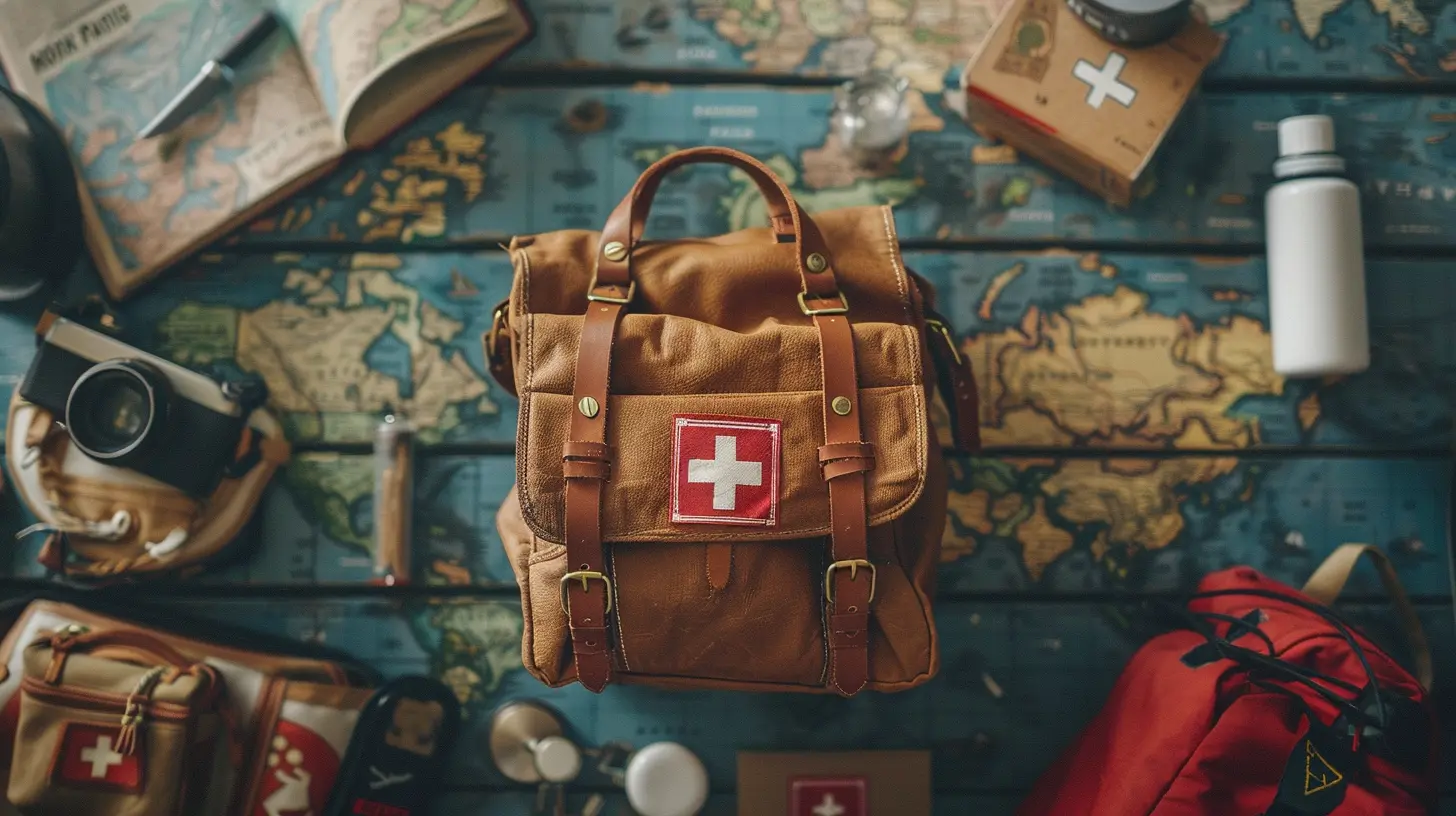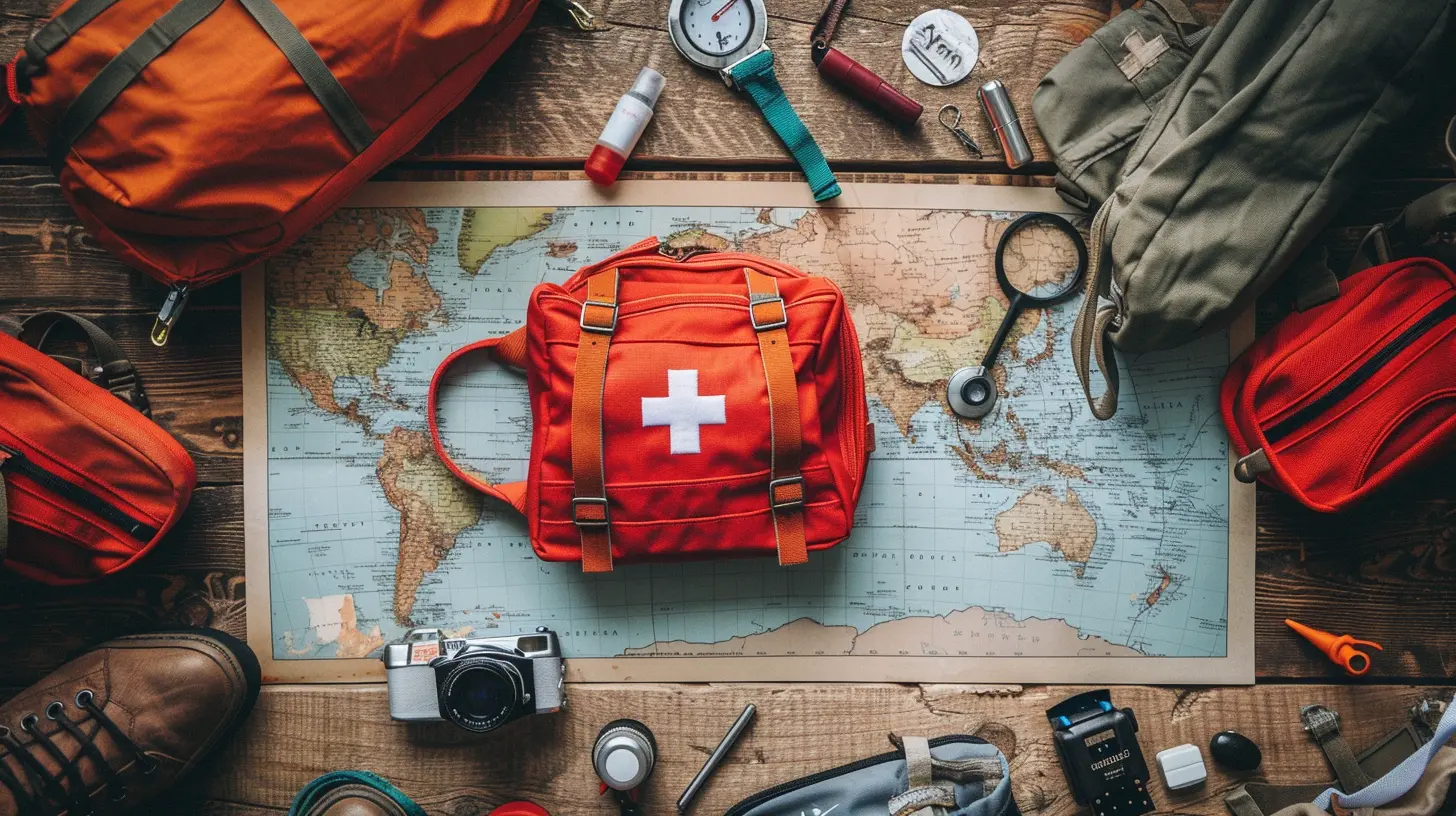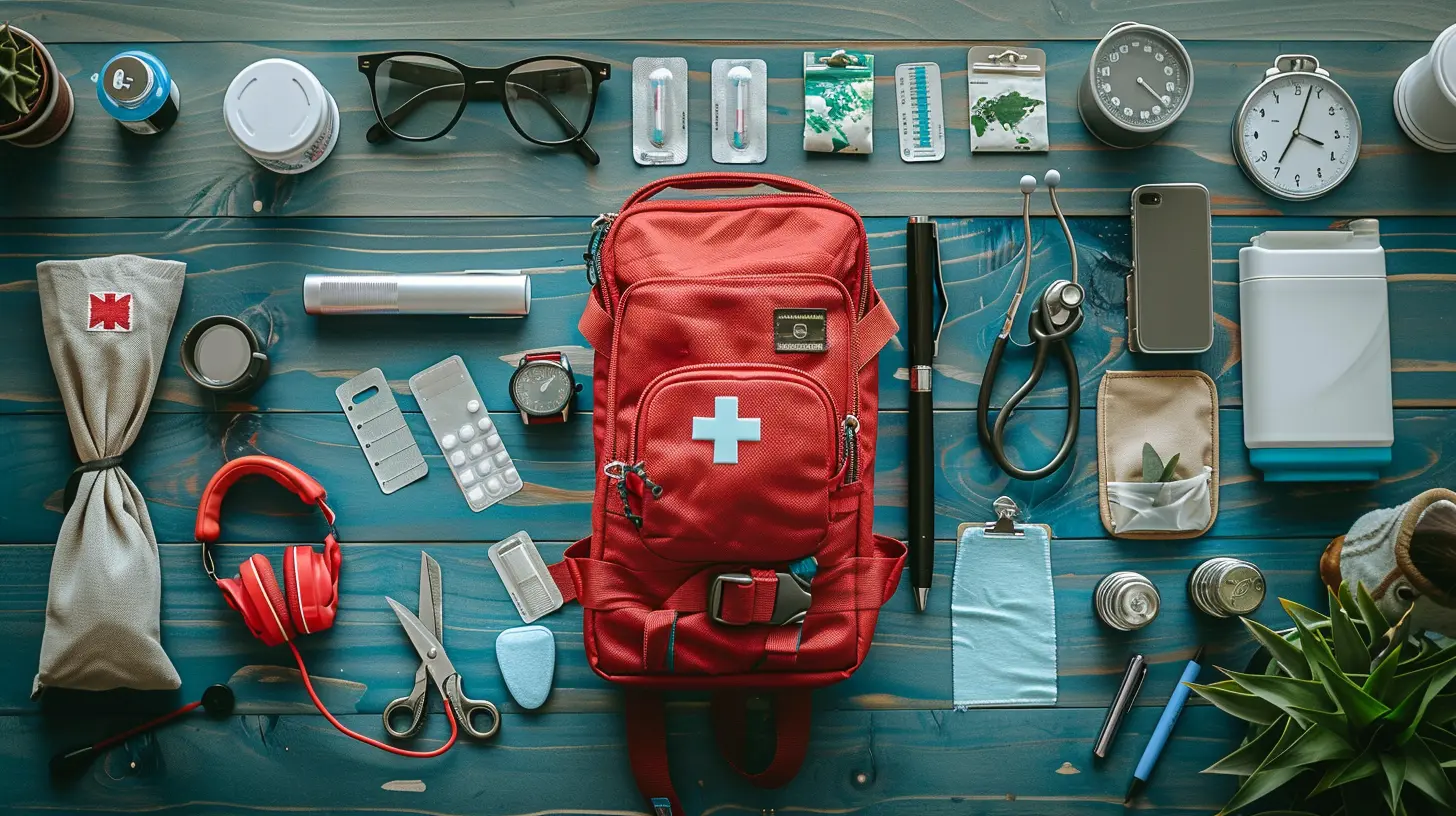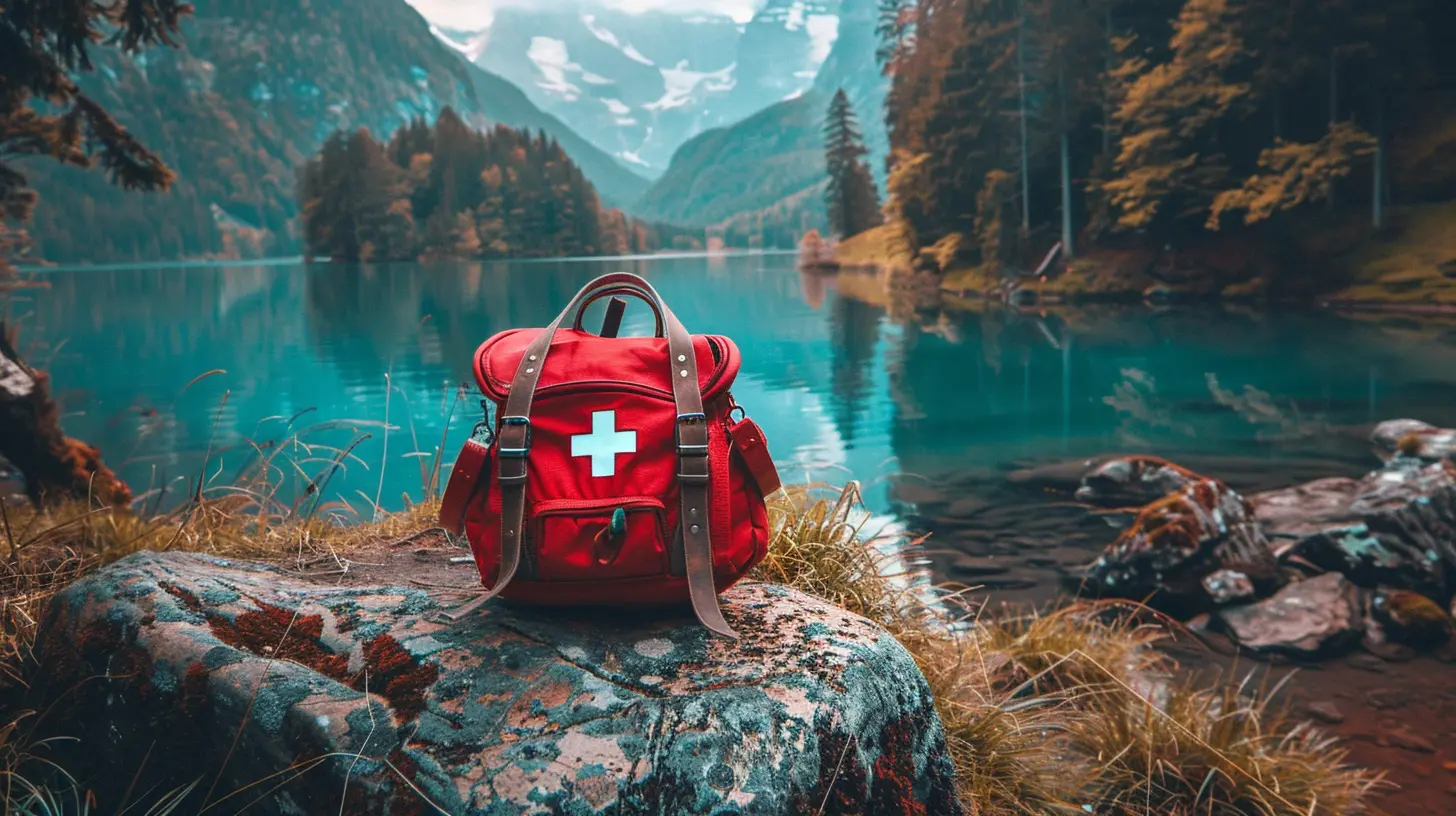How to Pack the Perfect Travel First Aid Kit
11 October 2025
Let’s face it—when you're planning an epic trip, your mind is on sunsets, skyscrapers, and street food, not bandages and blisters. But the truth is, things happen. A twisted ankle during a scenic hike, a surprise sunburn on the beach, or that classic case of traveler’s tummy from some questionable street tacos—sound familiar?
That’s why packing the perfect travel first aid kit is an absolute must for any seasoned traveler or first-time explorer. It’s not just about being prepared; it's about traveling smarter and stressing less. So, grab your backpack, and let’s dive into exactly what you need to craft the ultimate travel-sized medical safety net.
Why You Should Never Travel Without a First Aid Kit
Here’s the deal—we all think we’re invincible on vacation. But reality checks don’t care what country you're in. Scrapes, stings, and stomach woes are part of the territory. And while some destinations have pharmacies on every corner, others... not so much.Having your own first aid kit means immediate relief anytime, anywhere. No midnight pharmacy runs. No language barrier mishaps. Just peace of mind, right there in your backpack.
Step 1: Choose the Right Container
Before you start throwing in cotton and cough drops, you need the right home for your first aid gear. Think small, sturdy, and waterproof.✅ Features to Look For:
- Compact but roomy: Enough space to organize items without bulking up your bag.- Water-resistant or waterproof: Protects supplies during rainy adventures or kayak trips.
- Multiple compartments: Keeps things from turning into a tangled mess.
A clear toiletry bag, a custom first aid pouch, or even a small tackle box can do the trick. The goal? Keep it tidy so you’re not digging through bandages when time is ticking.
Step 2: Pack the Essentials (No Skipping!)
Not sure where to start? Picture the last three times you got hurt—or sick. Your kit should be able to handle each of those moments, no matter where you are.🩹 Basic First Aid Supplies:
These are non-negotiables. They cover scrapes, cuts, and everyday discomforts.- Adhesive bandages (various sizes)
- Sterile gauze pads and adhesive tape
- Antiseptic wipes or solution (alcohol or iodine)
- Antibacterial ointment (like Neosporin)
- Tweezers (for splinters or ticks)
- Scissors (travel-safe or blunt-tip)
- Disposable gloves
- Cotton swabs
- Burn cream or aloe gel
- Pain relievers (ibuprofen, acetaminophen)
These basics can take care of everything from a paper cut to a mild burn. Super easy, super essential.
Step 3: Add Medications (Both Rx and OTC)
Now we’re getting personal. Your first aid kit should include any over-the-counter or prescription meds you rely on regularly—and a few extras that'll save the day.💊 Common Meds to Include:
- Motion sickness tablets (Dramamine)- Antidiarrheals (Imodium)
- Rehydration salts (great for hangovers too!)
- Antihistamines (Benadryl or non-drowsy versions)
- Cold/flu relief tablets
- Cough drops or lozenges
- Antacids (Tums or Pepto-Bismol)
- Antibiotic prescription (check with your doctor if one’s appropriate)
- Malaria medication (destination-specific)
And don’t forget a small stash of any daily meds you take, packed in clearly labeled containers.
Step 4: Think Location-Specific
Where you're going matters. If you're heading to the tropics, your kit should look very different than if you're backpacking through Europe in the winter.🧭 Climate & Destination Considerations:
- Tropical or rural areas: Add insect repellent with DEET, anti-malarial tabs, water purification tablets, anti-fungal creams.- High-altitude areas: Acetazolamide (with doctor’s advice), oxygen booster spray.
- Cold climates: Lip balm, high-SPF sunscreen, heat packs, frostbite ointment.
- City travel: You might not need as much—just day-to-day essentials.
Do a little research ahead of time. Google “[Your Destination] common traveler illnesses” and pack accordingly. It’s like travel insurance, but in your backpack.
Step 5: Don't Forget These Often-Overlooked Items
They might seem small, but these extras can be game-changers in a pinch.🚨 Other Handy Add-ons:
- Thermometer (digital or strips)- Emergency whistle
- Eye drops or saline solution
- Safety pins
- Elastic bandage or compression wrap
- Hydrocortisone cream (itch relief)
- Blister pads (moleskin is your friend)
- Nail clippers
Ever tried hiking with a gnarly blister? You’ll never forget to pack moleskin again.
Step 6: Personalize It
This is your kit, not a one-size-fits-all situation. Consider your own health conditions, allergies, and travel style. Love hiking? Add extra blister treatments. Traveling with kids? Add children’s medications. Food allergies? Pack an EpiPen.Pro tip: Write your name and emergency contact info on your kit. You never know when someone else might need to grab it for you.
Step 7: Organize It So You Can Actually Use It
Ever tried finding a tiny pill in a sea of gauze and bandages? Not fun. A well-organized kit is a functional kit.🗂️ Quick Tips for Organization:
- Use ziplock bags to group items (e.g., meds in one, wound care in another)- Label each section
- Restock after each trip
- Keep a checklist inside the kit
Trust me—future-you will thank present-you when you're on a tuk-tuk with a headache and find that painkiller in five seconds flat.
Step 8: Know How to Use What You Packed
Having the gear is one thing—knowing when and how to use it is another. Take five minutes before your trip to familiarize yourself with everything in your kit.Better yet? Watch a quick YouTube video on basic first aid. You don’t need a medical degree, just a little know-how.
Bonus: First Aid Kit Packing Tips for Air Travel
Flying? Your first aid kit can usually go in your carry-on, but there are a few things to keep in mind:✈️ Airport Security Considerations:
- No scissors longer than 4 inches- Only travel-size liquid medications (under 100ml each)
- Keep prescriptions in original packaging if possible
Keeping it TSA-friendly saves you the awkward convo with a security guard over your mysterious white powder (spoiler: it's ORS salts).
Sample Basic Travel First Aid Kit Checklist
Here’s a quick rundown of what a reliable travel first aid kit should include:| Category | Items |
|---------|-------|
| Wound Care | Band-aids, gauze pads, tape, antiseptic wipes, ointment |
| Pain + Fever | Ibuprofen, acetaminophen |
| Stomach Issues | Antacids, anti-diarrheal, rehydration salts |
| Allergy Relief | Antihistamines, hydrocortisone cream |
| Motion Sickness | Dramamine or similar |
| Extras | Tweezers, scissors, gloves, thermometer, nail clippers |
| Prescriptions | Daily meds, EpiPen, antibiotics (if needed) |
| Region-specific | Insect repellent, sunburn cream, purification tablets |
Feel free to add or subtract based on your health and destination.
Final Thoughts: It’s the Little Things That Matter
Packing the perfect travel first aid kit might not be the sexiest part of your travel prep, but it is one of the smartest. Think of it as your personal travel insurance—small, silent, and ready to jump in when adventure throws a curveball.You don’t need a medical degree or a giant suitcase. Just a bit of thought, a pinch of planning, and a well-organized pouch of essentials. So before you zip up your bag and head for the airport, ask yourself: Would my future self thank me for this kit?
Spoiler alert: Yeah, 100%.
all images in this post were generated using AI tools
Category:
Travel HacksAuthor:

Taylor McDowell
Discussion
rate this article
1 comments
Nathaniel McCartney
Great article! Packing a well-thought-out first aid kit is essential for any traveler. I appreciate the focus on including essential items like band-aids, antiseptics, and any personal medications. It's a smart reminder that being prepared can make all the difference during unexpected situations on our adventures!
October 12, 2025 at 2:40 PM

Taylor McDowell
Thank you for your kind words! I'm glad you found the article helpful—being prepared truly can enhance any travel experience! Safe adventures!


